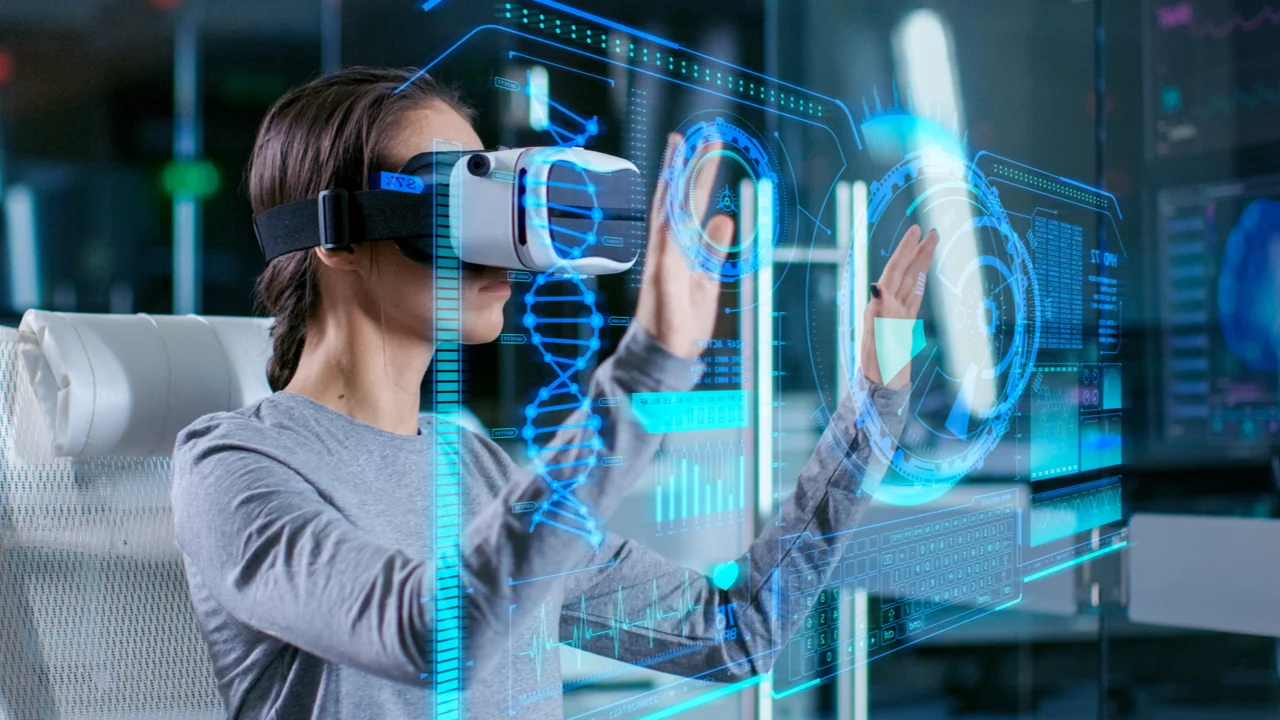Augmented and Virtual Reality technologies are rapidly revolutionizing business practices. VR headsets isolate users from their surroundings while creating an artificial world containing imagery and audio-visuals generated by computers.
Furniture stores using AR include furniture store mobile apps to allow users to visualize a new sofa in their own home, Loreal enabling virtual try-on of cosmetics and Lenskart helping customers see how glasses will look on them before purchase.
Virtual Reality
Virtual reality technology immerses its users into an artificially created environment through devices such as head-mounted displays or mobile phones equipped with cameras that relay digital information.
AR, on the other hand, uses digital elements to augment real world environments by adding digital objects into live views. It’s a much simpler concept that can easily be implemented through apps on smartphones; for instance Google Pixel phones enable users to add Star Wars characters or Stormtroopers into their surroundings using AR technology.
As virtual reality technology gains mainstream adoption, its applications can be seen across various industries. From architects creating virtual blueprints to car engineers conducting thorough crash analyses – the possibilities for use are virtually limitless. Retail stores may even leverage VR with “try before you buy” options for clothing, furniture and jewellery sales.
Augmented Reality
Augmented Reality (AR) is a subset of virtual reality that layers computer-generated information onto real world perception. AR technology has already been utilized by businesses across industries; for example Sephora offers an AR app which enables customers to test out different colors of makeup before making purchase decisions.
AR first gained fame through Pokemon Go craze. Since then, gaming industry has taken notice and adopted this technology into their games; using AR apps such as Pokemon Go can provide gamers with a way to view a neighborhood before traveling or visualize how furniture would look like in their living room.
As major manufacturers make use of industrial AR to design manufacturing processes – including robots and equipment – this provides them with an effective alternative to drawing blueprints by hand and also serves as an easy way for their colleagues to collaborate remotely.
Marker-Less AR
Markerless AR draws upon location data collected by smartphone sensors such as cameras, GPS, digital compasses and accelerometers in real-time to produce 3D graphics that correspond with physical spaces in real time.
AR can be seen in mobile apps like Pokemon GO, which uses AR technology to allow virtual Pokemon characters to appear at specific locations on screen. AR can also be seen in navigation apps with their overlaid arrows guiding travelers towards their destinations.
Furniture retailers use markerless AR to help their customers visualize how a piece of furniture will fit into their home, though this requires a surface that has texture so computer vision can recognize it; otherwise, the experience will fail.
Apple vs. Google
The two major tech companies are working on headsets and hardware designed to deliver better virtual and augmented reality (VR/AR) experiences than previously possible, including smoother operations with less latency than was once available.
Augmented reality uses virtual information to overlay on top of physical reality. This technology powers games like Pokemon Go and filters on social media apps like Snapchat. Furniture companies also utilize it for customers to visualize how something would look in their home environment; and NFL broadcasters draw lines onto playing fields in order to analyze plays more closely.
Marker-less Augmented Reality doesn’t rely on visual markers to display content; rather, mobile devices with sensors like cameras, GPS, accelerometers and solid state compasses already installed use these to understand their surrounding world and understand it more accurately than when using marker-based technologies. This type of AR may provide greater accuracy.
AR in Banking
Banks are constantly looking for innovative ways to enhance customer experiences, reduce expenses, and remain competitive. Augmented reality can help them meet these objectives by providing customers with tailored financial advice and engaging marketing campaigns.
AR can also help streamline mundane tasks. For instance, its digital form filling capabilities could dramatically decrease customer processing time for forms that require filling by customers. This technology offers numerous potential uses that make AR an indispensable part of life.
Numerous banks are already taking steps to incorporate AR technology into their customer service offering, for instance the Your Way Desjardins app uses AR to help users locate nearby branches and ATMs by overlaying this data onto smartphone camera screens. Westpac Bank is another organization which has already integrated this feature into their apps.


